There’s a bit of a tendency in the survival community to go gadget-crazy. I guess that’s not all that surprising, considering that it’s a male-dominated area and we guys are into gadgets. I actually get a double dose of that, as I used to be an engineer.
But gadgets aren’t always the answer. Sometimes, all we need is a little bit of good old horse sense. Those gadgets may not be available when we find ourselves suddenly thrust into a survival situation. If you’re dependent on them, you might find yourself in trouble. Better to know how to use common things to survive, rather than having to depend on something you might not have.
When I started out as a survivalist, over 40 years ago, we didn’t have all the survival gadgets that exist today. There really wasn’t that much of a market for those things, as there weren’t anywhere near as many survivalists back then. So we did what we could, mostly finding ways of using things that we already had, rather than hunting for things that didn’t really exist.
Pretty much any common item can be used for survival, in some way or another. All it takes is a little bit of imagination to figure out how. Fortunately for me, I’ve been endowed with a great imagination; so I’ve come up with a few ideas through the years.
Related: 18 Vintage Homesteading Tools to Search for at Garage Sales
So, without further ado, here are a few ideas for your consideration:
- Use stockings and an old tennis racket to make a fishing net.
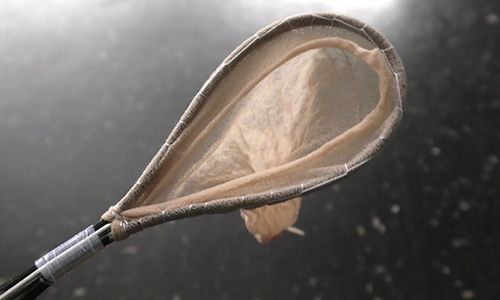
- Sanitary napkins make a great substitute for bandages, they’re absorbent and sterilized.
- Elastic hair bands can be used to hold poles together for a shelter you build in the wilderness.
- A small gardening shovel or hori-hori works just as good for most wilderness survival tasks as a folding camping shovel.
- The best survival saw for a BOB is a folding pruning saw.
- Dental floss can be used for suturing. It also works well for tying off an umbilical cord, when a baby is born.
- Dental floss is also great for general repairs of backpacks, belts and other survival gear.
- Pillow cases are probably the best thing going, when you need emergency bags to carry food and other things in a bug out.
- Quart sized kitchen bags are great for an emergency canteen.
- Empty container from mints, medicines and other candies are great for organizing small items in your bug out bag.
- If you’ve got a Fresnel Lens for reading fine print, it will work much better for starting a fire than the wallet-sized ones, because it is bigger.
- Crayons can be used as candles; they’ll burn for about 30 minutes.
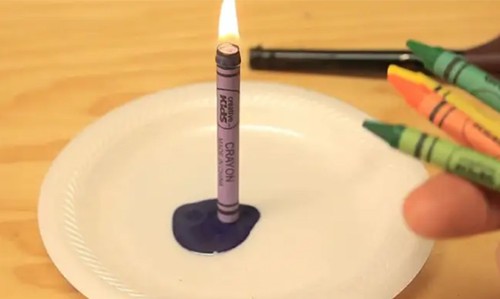
- You can waterproof normal canvas tennis shoes by rubbing them with a candle.
- Corks from wine bottles work for fishing floats.
- Connect a bunch of wine bottle corks to the edge of a piece of thin fabric, then anchor the other edge in the bottom of a stream, making a fish trap.
- A good kitchen knife, like a French Chef’s knife, works just as well as a survival knife as one designed for that purpose. The only thing to watch out for is that the blade isn’t as thick.
- A colander can be used to catch minnows for use as fishing bait.
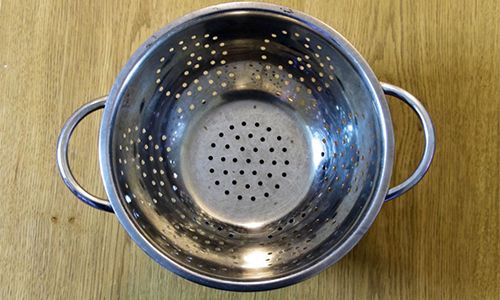
- Steel acoustic guitar strings make some of the best snare wire you can find. There is already a loop for attaching them at the saddle, making it very easy to make a loop in the snare.
- Dryer lint is a good tinder for starting fires.
- A pistol magazine pouch can be used for carrying a multi-tool and a tactical flashlight together on your belt.
- Both 20 Mule Team Borax and “color-safe” bleach contain hydrogen peroxide, which can be used in place of alcohol as a disinfectant.
- Safety pins can be used as fish hooks. Likewise, pop tabs from canned drinks can be cut to make fish hooks.
- Cut the legs off of old pants, before throwing them away. The cut end can be sewn together and Velcro added to the cuff end, to make storage bags for things in your bug out bag.
- Legs cut off of pants can be filled with sand and tied at both ends for a very effective sandbag, which is just the right size for blocking doors from flooding.
- Extension cords, lamp cords and equipment connection cords with braided covering all make great cordage for tying things up.
- Doritos and potato chips can be used as fire starters.
- If you don’t have a vacuum packer, you can use the hose from a vacuum cleaner and a hair straighter to vacuum pack food in just about any sort of plastic bag, although aluminized Mylar bags are best.
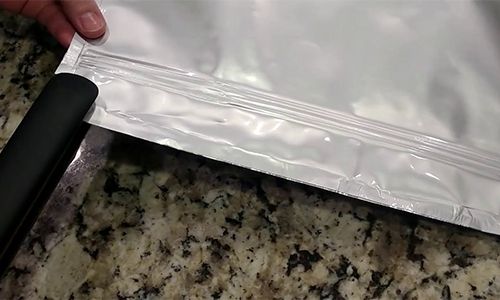
- Be sure to pack some heavy-duty aluminum foil in any survival kit. It can be used to make emergency frying pans, pots and cups.
- It’s a good idea to keep some quarters in your survival kit or EDC bag for use with pay phones (assuming you can find one). Before putting them there, drill a small hole in each, so that you can use them as fishing weights.
- Never throw away old decorative candles, they can be melted down and put into spaghetti sauce jars to be used as survival candles.
- Old key rings are just as effective for hanging gear on your pack as carabineers.
- Razor blades can be taken apart for knife blades. They can also be used to make arrowheads and fishing spears.
- Arrow fletchings can be made of duct tape.
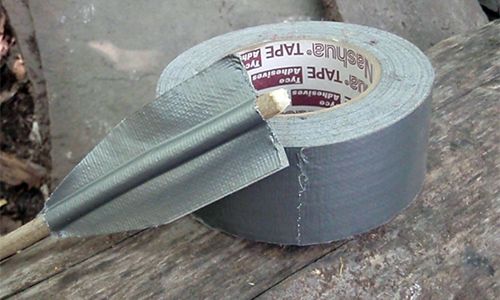
- An old shoulder bag, messenger bag or small duffel can be used for a survival kit, get home bag or EDC. You don’t have to buy a fancy bag for it.
- Put you favorite spices into TicTac containers, taping the lids shut so that you can have spices in your BOB.
- Any squirt bottle can be used for adding accelerant to a fire, water to control around the edges of a fire, or for putting out a fire. Just be sure to mark it, so you’ll know what’s in it.
- Your gas barbecue grille can be used as a fire pit, burning wood, in a survival situation.
- Broken glass, from broken windows, can be used for arrowheads or a knife.
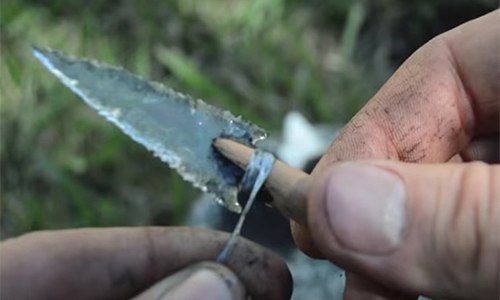
- Superglue can be used for first-aid, holding wounds together. That’s what it was originally developed for.
- Water can be pre-filtered through stockings, tights or T-shirts, to eliminate items floating in the water, some solids and even mud.
- Any cordage and a stick can be used to make a makeshift tourniquet. Make a loop out of the tourniquet and then use the stick as a windlass to tighten it.
- Plain old table salt is one of the most important things you can stockpile, as it is a natural preservative, especially for meat.
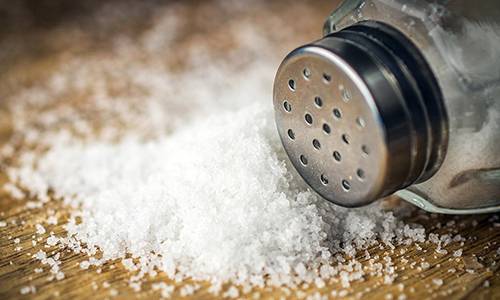
- Any bright pieces of scrap fabric can be used to make fishing lures.
- Leather belts are useful as straps, either shoulder straps for packs or for tying things together.
- Wasp & hornet spray is useful for self-defense, replacing pepper spray. It shoots farther too.
- While it’s a shame to waste them in this way, pages torn from books can be used as tinder for starting a fire.
- Binder clips, attached to a fishing pole with broken guides, work as a replacement for those guides.
- Large nails, bent and welded together, make good caltrops for home defense.
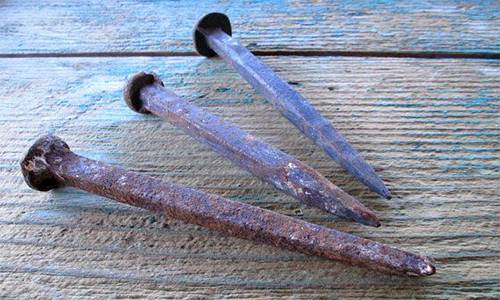
- Clear plastic wrap can be used to wrap a wound, over the absorbent bandage material, to keep the bandage clean. This is especially important for an abdominal wound, as you are transporting the patient to the hospital.
- Large plastic bags make great makeshift ponchos.
So, this is my top 50 items from the home, which work for survival. What else do you have that you can add to this list?
You may also like:
 10 Common Survival Mistakes. Are You Making One Of Them?
10 Common Survival Mistakes. Are You Making One Of Them?
12 x More Efficient than Solar Panels? New Inventions Takes (Video)
Top 13 Prepping And Survival Items You Can Find At Farm Auctions

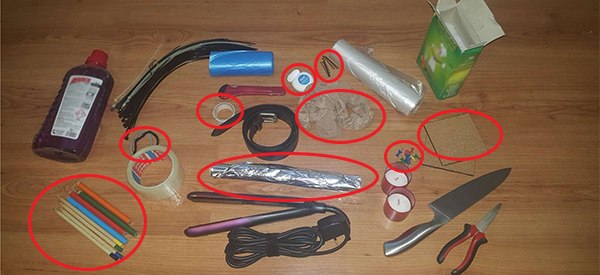













Tampons are great for stopping nosebleeds. We even use them on ambulances sometimes. Web belts work as good as leather belts for strappings.
There is an urban legend that tampons should be used for stopping bleeding by stuffing into a penetrating wound. Even some EMTs have stated that they have used them in that role.
I try to point out that technique may be quite satisfactory in a modern day EMT vehicle on the way to a fully staffed and equipped emergency room where the wound will be fully irrigated and antibiotics and anti-tetanus treatment immediately started.
However, in a situation where emergency hospital services may be several days away or non-existent as may exist in an end of the world scenario, stuffing a tampon into a penetrating wound is stuffing everything the penetrating object carried with it into the wound deeper into the body which will lead to a deep-seated infection around that penetrating wound. If there are no or limited antibiotics and trained medical care and adequate medical supplies are scarce or non-existent, that is insuring certain painful, lingering death for the person suffering the wound.
Even in a combat situation presently, if the wounded individual is receiving emergency field treatment by a corpsman or medic, the chances of a helicopter dust-off and trip to a field hospital are imminent and the wounded patient will receive the necessary anti-infection treatment, including tetanus shots. All of that will not be available in an end of the world situation and it behoves people who may have used this technique in the past to recognize that we will be experiencing a trip back to the 18th century and what may have worked successfully in a quarter of the way into the 21st century will be contraindicated. They should not recommend a treatment that depends upon 21st century treatment modalities for an 18th century world.
I fully agree with you and the points you made about using a tampon for a penetrating or puncture type of wound. One other thing…if you ‘do’ use a tampon, remember it has to be removed at some point. When you pull it out you will put the ‘patient’ thru hell if it has adhered to the wound and as a bonus…you will cause a lot more trauma.
Thanks for the great article! I have a question about one of the video advertisements attached to The bottom of your article: “12x more efficient than solar panels” How do I get in touch with you about it? I was going to order the product, they have all the billing info spaces, but do not ask for a physical mailing address.. so how are you supposed to receive the product they’re trying to sell?
Hi Deb,
Thank you so much for your interest in our work.
I have sent you an email with details on the product you’re interested in.
God bless,
Claude
My EDC is a nice leather backpack. It holds a lot including snacks, a complete change of seasonal clothing, some important tools, a weeks worth of perscription med, bottles of water and fIavor packets so warm water will taste good, comfortable walking shoes, my wallet, a tin cup that can be used on a fire to make tea or cook forage plants. There is a 5 flavor herb shaker, a sandwhich bag of chicken and beef bullion cubes. A real metal spoon :), several sheets of riptide nylon desert camp material, a spool of nylon twine, 8 tent pegs, a trowel, a packet of old TP that was trifold for a dispenser, 3 old stained but intact EL tee shirts. ( those make good water cleaners, hot pads for the handle of that large enameled cup I carry, can wrap cold hands or feet. Many uses. You can take a strip of tee shirt to slowly transfere muddy water to the cup for boiling while the material holds back mud or twigs. Let it drip into the lower container. Visually it will be clean. Then either boil it or put in an empty clear water bottle and lay a few hours in bright sunlight. Outside pockets holds more edibles, a multi tool, a few feet of rolled up thin wire, a few wire clamps, a wire saw rolled up, a little notebook and pencils, and a sandwhich bag with 2 lighters, some candles, 2 TP paper rolls stuffed with cotton balls and petroleum jelly.
It’s a simple bag but would take care of me if stranded. I don’t have on packed for my husband. He has a BOB to take from home. It’s rare he leaves home now.
In any emergency situation, you first have to start with what you have, so the moral of this story is reuse, recycle, retrofit, renew, and never throw anything out!
Yes, but do not hoard in your living spaces. This can create a fire and health hazard. Buy or build a “portable building” used or new (whatever you can afford) and install shelving to store your preps in. That way visitors will not know you are a “prepper” and beat your door down because they didn’t prep when the time comes.
having a proublem priting out 33 to 43 whats the proublem
When I was a kid we used window screen as fishing nets. Tie a leader to each corner of about a 12 – 18 in square. Tie the 4 leaders to a single heavier line. Wet bread and smear it on the screen for bait. If it doesn’t sink fast enough, tie a knot in the end of a piece of fishing line or string force it through one of the screen openings in the middle of your fish trap. Tie any kind of heavy weight to the open end of the string under the fish trap. A big old rusty nut works as well as an expensive (now) lead weight.
I use fishing line for all my sewing needs. I am not tailoring a bespoke suit, usually I am repairing my coveralls or my every day clothes which are most definitely not designer.
15 – 20 pound line seems to work best for me. I have worked with 10# line but it is very fine and with my old fingers, hard to work with. Someone with better finger dexterity could easily use 10# which is quite strong enough and blends in nicely with the material.
I cut newsprint into one inch wide strips, as many pages as cut easily with a pair of banking shears sold cheaply at Harbor Freight. I roll it into a coil about 1 inch in diameter. I secure it with a rubber band and soak it in water until it is soaked completely through. I let it dry thoroughly, take off the rubber band and stick it in a jar of rancid or thoroughly used cooking oil. When you want to start a fire, take about a one foot piece of the oil soaked newsprint off one of the rolls in the jar and light it with a match or try out your other fire starting methods. Personally I like matches. The oil soaked paper makes a great fire starter and will burn for quite a little while. It smokes some but then any starting fire smokes.
The Survivor Russian has a U-tube video on how to make cordage out of PET bottles. He also demonstrates various uses for your new cordage. You can get quite a long piece of cordage from a 2 liter PET bottle. He doesn’t show it, but save the tops to use as funnels. You will be doing a lot of liquid transferring in an EOTW situation. You don’t want to use the unsanitized water funnel to funnel your newly purified water.
Hi Chuck;
Can you point out to me where I can find “The Survivor Russian”? Is it a blog, website or Youtube channel? Thanks!……………………nemo
I believe he’s talking about Crazy Russian Hacker. https://www.youtube.com/user/CrazyRussianHacker
Sgt. He does know how to make a mess 🙂 niio
Just because a tampon may fit an entrance hole from a bullet wound, what about the exit wound? Gonna use a panty pad to try to bandage it? Both types will allow too much blood to escape, causing shock and trauma beyond the wound itself. A compression type bandage is the most common bandage for gunshot wounds, they are inexpensive and some are filled with a clotting agent to help seal the wound. Have several in your kit (4 to 6) in case you have to travel some distance for medical help. Also, any large puncture wound can use compression bandages to stop blood loss.
Best try the other fire starting methods as matches in a TSHTF situation will not last forever. A fire rod, flint and steel, magnifying glass, your glasses, a 9V battery with steel wool, and all the other ways of creating a coal. I may have a closet full of matches in ziplock bags, but they will only last about a year unless you only use ONE a day for firestarting. There are always alternatives to matches!
Dip your wooden matches in vaseline, and they are waterproof and burn exceptionally well.
I beg to differ greatly regarding one of the above recommendations. The suggestive use of tampons for bandaging is not a correct use in trauma situations. As a practicing paramedic of over 30 years I can unequivocally state that this is not proper. Tampons are made to be super absorbent and will draw a great deal of blood from the patient. Through pressure/trauma bandaging you want to stop the exsanguination of the patient, not assist in the loss of blood. Trauma bandages (sometimes multiple, layered) along with the use of pressure application will suffice in most instances. Arterial pressure points and tourniquets may also be useful. If an ambulance in our state was stocked with tampons as mentioned above, they would summarily fail a state inspection. I am all for using unconventional items to suffice in a disaster however not when it becomes counter productive to the mortality or morbidity of the patient.
Sanitary napkins…not tampons.
Thanks for setting the record straight.
Are you sure that sanitary napkins are sterile? I have read contrary information.
Sanitary napkins are not sterile. They are clean. They ARE better than your week-old, used handkerchief as an emergency wound cover or one of your used socks. In an absolutely dire circumstance, anything that will help can be used. Better to worry about fighting infection later rather than have the injured bleed to death for fear of using a dirty handkerchief to stop blood flow.
When I first learned first aid in the dark ages, the use of tourniquets was taught in all first aid classes. Then the worry started that the use of a tourniquet might lead to the loss of a limb. I guess some doofus in government decided it was better to have the victim bleed to death than risk the loss of a limb. I always wondered about that advice that all first aid instructors were handing out.
Then after we started losing troops from loss of blood somebody with at least half a brain pointed out it just might be better to lose a leg than a life and we got back to common sense. Put a damned tourniquets on so the vic doesn’t bleed to death before he even gets loaded on the helicopter or into the ambulance. Worry about the leg after the life is saved.
Back in the dark ages we were always taught to loosen the tourniquet after 20 minutes to see if the blood flow from the injury had ceased and if it hadn’t to reapply the tourniquet and to keep loosening it every 20 minutes to prevent loss of limb and just maybe the bleeding had coagulated and a tourniquet was no longer necessary.
In an end of the world situation, having anything clean to apply to a wound may be sketchy, but rather than stocking up on sanitary napkins for use as a sponge for a bleeding wound, stock up on 4 x 4 pads which are sterile as long as the paper wrapper is intact.
With absolutely nothing else around, even paper towels will work as sponges for a bleeding wound. I would not use the first couple of paper towels, but take them from further inside the roll to hopefully avoid some contamination.
Even toilet paper will work if there is nothing else. Make a thick pad of toilet paper and apply it to the wound with pressure to stop the bleeding. If that’s the cleanest thing you have, use it.
Regarding no teaching any more on Tourniquets – we took a Red Cross CPR/First Aid Class where the instructor said RC no longer recommends using one, on advice from their attorneys….stupid stupid stupid. Let the victim die?!
The main reason the Red Cross no longer recommends a tourniquet is that if applied incorrectly, the patient may lose a limb. They may live, but in our lawsuit happy world, the victim can sue. If you learned to do it in an ‘official’ Red Cross class, they would, possibly, be able to sue the Red Cross. There ‘are’ a few people, I know, that if they had a head injury…were bleeding a lot…I’d be tempted to put the tourniquet around their neck and tighten it…just to stop the blood flow, of course.
I used salt, to stop the bleeding, on myself in an emergency situation. I fell in the garden , on a wire tomato cage, and slashed my arm open in the AC space. I poured it full of salt and wrapped it in a dish towel. , held pressure on it until I could get to the ER. It required 18 stitches. It healed well, with no infection, and very little scarring. Good to know in a survival situation.
Clear plastic wrap can be used over sucking chest wounds as can any piece of similar plastic.
Two things…First, even full strength ammonia is a poor disinfectant. I doubt that Windex would be effective.
Second, I have purchased many guitar strings over the years and none have come with a loop on them.
paulg: I agree. Ammonia is not a disinfectant. It is a cleaning agent but there is a difference between a cleaning agent and a bactericide.
Unfortunately Rich M. writes a lot of stuff that he doesn’t take the time to verify. He is good for starting a discussion as many followers of this list chime in with corrections to stuff he has written. But there is a considerable amount of misinformation in his articles.
The same with guitar strings. That is a urban legend that has been reposted time and time again. I don’t know about guitar strings but I know that there are no loops on violin strings by the same route, buying them from music stores.
Hi Paulg and Left Coast Chuck,
Thank you so much for your comments and for your valuable contribution to our website.
Ammonia cannot be used as a disinfectant indeed, so the article was modified accordingly.
As far as guitar strings go, not all of them have a loop (electric guitar strings don’t have that loop, nor do nylon strings for a classical guitar). However, steel acoustic guitar strings do come with a loop. It basically depends on the type of guitar strings you have.
Once again, thank you for your contribution. It is greatly appreciated.
God bless,
Claude
My husband uses self catheters. That is a long clear tube somewhat flexible with a rubber tip at the other end that has a hole through it. It comes sanitary wrapped for single use. I was told that if the clear tube were cut off short and keep the rubber end intact it could be used for a throat trechia tube. Air passes through it quite easily and it is sterile. A sharp scissor can cut it easily. I keep some packed along with inexpensive bandage scissors and sterilized white shoe laces with the hard tips cut off. Those are for tying off an umbilical cord. A small bottle of olive oil and cotton balls are for cleaning a newborn. A few new big white tea towels are to wrap a newborn in or make a fine sling for an injured arm.
( My husbands tubes are not pre lubricated. There are some that come pre lubricated. )
My husband is on blood thinners so I keep blood stop pads in the home first aid and bug out first aid bags. It will help stop bleeding very quickly. Sulfa capsules opened and sprinkled on a wound will also stop bleeding quickly. They were a WW2 medic staple on the battlefield. It also will work to cure a “dry socket” problem where a tooth has been pulled and the blood clot lost. It’s a painful condition and slows healing.
I bought suture kits that have the curved needles and “cat gut” material for sewing. I also bought a surgical grade scalpel and a box of 100 new assorted style blades for it. I keep #10 fishing line and needle nosed pliers with them. A bottle of Betadine is packed with those supplies. Don’t forget petroleum jelly and chapstick can keep dirt out of smaller wounds, keep bandages from sticking in wounds, and even clean a newborn. Petrolium jelly and dryer lint or cotton balks in toilet paper tubes make great firestarters.
I keep digital thermometers at home and in BOB’s. A fishing scale if it will weight 10lb or more can also weigh a new born. I have one in the BOB.
Simple things can cover many uses. I save pull tops from food cans to string up in the fruit trees and berry bushes to keep away birds. I made a paracord belt. I figured that actually would give me enough rope to be useful. I keep 100 large safety pins in the first aid bag. Pin a tea towel as a sling, pin a baby diaper, pins to replace the grippers for an ace bandage, pins to replace lost buttons et. Tiny pins aren’t as useful.
Yes feminine pads are sterile and often individually wrapped as are feminine leak pads that are even more absorbent. They make a good pressure pad. I keep smaller sized tampons for bloody noses.
The distilled water sold to use in a steam iron is sterile until opened. It is fine to irrigate or wash a wound.
Activated charcoal is safe internally if powdered so it can can be drunk in water. In small chunks it helps make a good water filter. You need cloth-window screen- cheese cloth so you can filter out twigs et. Then clean sand (play sand), then the activated charcoal(look in fish tank supplies), another layer of clean sand. I use gause or cheese cloth as a final step on the faucet on my 5 gallon container so sand doesn’t clog it up. It works fine as water perculates down through the layers.
The cheap plastic bottles water comes in can also be used to purify water. Fill and lay in direct sunlight for a few hours. The sun and heat will kill bacteria and tiny living things that may be hiding in water. I filter the water then fill bottles to lay in the sun. You can make many funnels from the neck section of water bottles that will support plants in a hydroponics garden. The bottom part of water bottles can be drinking glasses or planters. You can wire bottles together into a shelter or a greenhouse. You can even make a boat with a lot of water bottles. A friend made a sun shade with bottles. I’ve seen gardens planted in bottles on porch railings.
Bugging in, or bugging out, recycling can be very useful.
Clergylady: If you are talking about a tracheostomy, yes.any clear tube that won’t collapse will work to keep the ostomy open, including a ureter catheter tube. Don’t try an intubation via the mouth, however, it is too easy to rip out the vocal cords in that process.Sometimes even anesthesiologists with hundreds of such procedures under their belt manage to do that number.
I have doubts whether a digital thermometer will work after some kind of electrical event leading to the ETOW. Fortunately, I have an old mercury thermometer left over from the dark ages. I don’t know what is in the newer non digital thermometers, perhaps alcohol. They seem accurate enough.
Chef knives are dangerous for wilderness use, the handles tend to be small and slick and there is nothing to stop your hand sliding down onto the blade. The steel in a chef knife is brittle compared to an outdoor knife, pretty easy to break the blade.
Folding pruning saws, decades ago, were made of good American steel and stayed sharp forever, nowadays they dull after a few cuts. I’ve started using reciprocating saw blades, they mount into a handle for hand use, blades for all uses from pruning to copper pipe, cheap.
My must have household tool when I am camping or working outdoors is a good pair of scissors, be surprised how much easier life is with a good pair of scissors.
We tried, as little kids, every which way there was to make a seine out of window screening, but the mesh is so fine you can barely move it through the water. You can trick a few minnows that way, not much more.
I’ve watched some good youtubes on napping glass for arrowheads, bottoms of bottles are best, I think this is an under appreciated resource.
My brother once proved, by jumping off the roof, that you can’t repurpose a bed sheet into a parachute. That left it up to me to prove you can’t repurpose an umbrella into a parachute, either.
IvyMike: Basically we were fishing for minnows to use as bait to catch bigger fish. We didn’t move it through the water, we dropped it down into the water just deep enough so that we could barely see it and waited until we could see minnows inside it and then pulled it straight up. The minnows were trapped against the bottom of the net by the push of the water.
A pair of garden shears is handy to also have also when camping/hunting. They can cut through small bones, especially if you are hunting birds. They also can be used in skinning. They can prepare kindling quicker than saws and hatchets with less scrambling after flying pieces.
I agree about the saw with reciprocating blades. Stanley makes a handle that takes reciprocating blades for hand use. I don’t remember if the blades fit in the handle or not. It’s been a while since I used it. My recollection is that some of them fit but that recollection is hazy.
Silkyboy Japanese folding saws have taken the place of Corona folding saws. Corona used to be made in Corona, CA, hence the name and all the manufacturing was done in plant. All their stuff is coming from China now with the resulting loss of quality. Silkyboy products, despite the weird name are quality, made in Japan items.
Some Japanese kitchen knives are suitable for field use. They are heavy duty knives made for intensive commercial use. I have a knife that is almost a cleaver. It is thicker than the standard U.S. Chinese made kitchen knife. It is not stainless and it is wicked sharp. It is made at home by a Japanese farmer who makes them in the winter when he isn’t working in the fields. They are made from white paper steel which is high quality, high carbon content steel used in making Japanese swords.
How times have changed. It used to be Made In Japan was eponymous with cheaply made junk. Now Made in Japan is the sign of quality merchandise. It’s too bad that our U.S. companies have chosen to take the low road with regard to manufactured goods. Very little is Made in USA today much to our disadvantage which I think events so far this year have proven. Hope we can make a sea change very soon.
I’ll check out the silkyboy saws, thanks. A Japanese farmer spending the winter making knives from white paper steel. I love the image, you’re lucky to have one of his knives.
A huge part of our GDP before the Panidemic was from the restaurant business and from accounting interest paid on personal debt as production. That’s our economy now, paying for the gang at Chilis with your Amex.
I have 2 old round parachutes. On army green and one turquoise. I wouldn’t jump off of a roof with either but they sure make a fine shelter.
ClergyLady: Hey-lo, how goes it? The parachutes are a great idea. For here, wickiup, then use the parachute as a night cover.
Just wondering, are yours reflective material? niio
Rich: please be aware, if you do some of this you can get a very bad spanking from Mom. Um, year. Well, it was a long time ago and, well, you know how it is. niio
No the parachutes aren’t reflective. Pd $20 EACH. Extras from movie making a few yearsago. YUP I FIGURED WIKIUP STYLE SHELTER WOULD BE GOOD. one could also cover a small pit dwelling style dugout for colder weather
The pithouse is great in hot weather, too! Stop yelling! 🙂 niio
#9 Best to use quart freezer bags, they are thicker and resist puncturing. #16 any old kitchen knife such as an “Old Hickory” has a thick back edge and is carbon steel instead of stainless steel that is so soft it won’t hold an edge.
If you are sharp eyed at yard and garage sales, you can find many things that can be re-purposed for survival. Some kids old school backpack would do fine for a bugout bag as long as the colors aren’t too bright and the zippers do not bind. Too many people are capitalizing with new gimmicks that can be found used and still good for re-purposing. Any good survivalist can re-use the common trash found on the ground for tools, shelter, camp utensils. I made a really good knife out of an old lawnmower blade (it is almost indestructible). Wire extension cords can also be used for radio antennas if you separate the three cords inside the jacket. Hard drawn copper wire or tubing can be made into many useful items, just use your imagination and your multitool!
Dental floss can also be used for trip line in a perimeter alarm system; and to build snares. Use the “non mint” type (the odor can alert both people and animals). Rub the floss with either dirt or fresh leaves/grass, etc., in order to shade it to match the background color(s).
Keep a couple of “electronic” lighters in your kit. Even when the fuel is gone, the striker will spark for hundreds (perhaps thousands) of times. That spark is enough to start very dry tinder or dryer lint.
Small zinc washers serve double duty as sinkers and shiner bait on a fishing line.
Never throw away old shoe strings. They make excellent cordage.
Push a length of cotton or other natural fiber yarn into a jar of petroleum jelly with a nail, or screwdriver to make a wick, in order to create an emergency candle. Pinch the jelly tight around the top of the yarn, and snip it to length.
An analog (dial face) wrist watch can be used as a compass. Google the method; it is pretty simple.
Keep some Dawn (trademark product) dishwashing liquid in 3-4 oz. bottles. It is a GREAT all-around cleaner and surface disinfectant. Back in my Fire Service days, we used it as our go-to decontamination cleaner for our Hazardous Materials team gear and equipment cleaning.
I have several heavy plastic bags that our pills have been mailed to us in. I have kept them because I felt that they will come in handy for what?? I just can’t make myself throw them away. Any suggestions?
I have two handmade knives. One made from a railroad spike. It’s heavy duty. It could be pounded through bone with a hammer and emerge unharmed. Sharpens ok. The other made from a farriers file is also a substantial knife and holds the better edge. Both have antler handles with a tang all the way through the handle with the tang making a cap at the end. Each has a nice curved piece that stops the hand from sliding onto to blade. Beautifully made made by a son using his homemade recycled material forge and home made blacksmithing tools.
Folks that grow up making do with what you have or find, develope an eye that sees possibilities in the most unlikely items.
One man’s trash is another man’s treasure.
Once gain, Rich M is only half right. Borax is not a bleaching agent similar to hydrogen peroxide. It is a cleaning agent but not a disinfectant. It does a job on roaches and moths but while they are pests they are generally not in themselves as deadly as bacteria and viruses.
For those interested, hydrogen peroxide is H2O2. Borax is
Na(H2O)4]n the chemical name is sodium borate or sodium tetraborate. The tetra is indicated by the 4]n and while my chem prof would say, “And . . .” that’s the end of my report on those two chemicals.
Please do a quick check on chemistry before making erroneous statements about chemical properties if you don’t know what you are talking about.
Borax is a great cleaning product. That does not mean that it kills bacteria and viruses. Hydrogen peroxide is used in color fast cleaning products and it does oxidize as part of its cleaning process. I don’t know if it is a strong enough solution to kill bacteria and viruses so I won’t make any statement in that regard other than to say, one should consider whether it makes a statement about its antibacterial capabilities on the label. If it does not make a statement in that regard, it is not regarded as a disinfectant by the EPA and other governmental bodies who oversee such things.
Urban legends, no matter how frequently repeated do not become fact by the frequency of the repetition.
I worked for a soft water treatment company for a bit, and the owner always used hydrogen peroxide to run through a reverse osmosis system to sterilize everything after replacing the membrane and filters. I’m no expert on whether it sterilizes or not, but that’s what he did, and I did as I was told……………………Nemo
I believe it is at 3% that H2O2 become an antiseptic. I have no knowledge of how strong the H2O2 is in colorfast soap. I suspect it is not very high.
Does anyone remember the term “peroxide blonde” indicating that the lady’s hair bleach job came from a bottle of peroxide and wasn’t professionally done. I don’t know if that was an urban legend or not, but it does indicate that the peroxide in regular drug store concentrations is a bleaching or oxidizing agent. IF it can bleach hair, it certain can bleach the color out of clothing, so in order to be color safe, I would imagine that the hydrogen peroxide was fairly weak.
All of the above, of course, is supposition and just based on just hanging around for so long. There is nothing scientific about it at all, just observing life and thinking about my observations. You, of course, are totally free to draw your own conclusions. Just watch out for urban legends that are stated as if they were the 13th Commandment.
LCC, Back in the day, had a cousin who was a peroxide blond. At 19, she thought she was some hot stuff! We went to Jones beach together and she decided to go tin the pool. Well, her hair turned bright green from the chlorine! Her mom gave her a tomato juice rinse to get rid of the green and a lot of her hair fell out! Could be why you don’t see many around these days!
I sent for the book how to build a root cellar My check was cashed he book never arrived